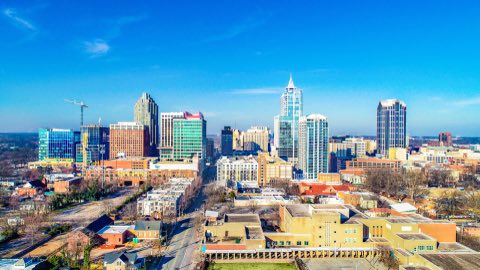
The city of Raleigh, North Carolina now uses machine learning software in real time for traffic counting. Previously, it relied on contracted workers to sit at intersections and physically count cars or used GoPro cameras attached to signal poles. That data was then sent to third-party services to analyze how many cars and other vehicles had passed through the city’s intersections in a given time frame. Raleigh grew by more than 50,000 people between 2010 and 2016, leading to a “deluge of data” that needed to be utilized to improve mobility and urban planning – all while keeping costs down.
To initially test an automated process, the city’s GIS and emerging technology team outfitted a Raspberry Pi chip with a camera to record raw footage of traffic at an intersection and ran the video through TensorFlow – Google’s open-source machine-learning platform – which counted the cars.
“We have hundreds of cameras around the city that have traditionally been used to visually support traffic management, congestion management, event management,” city GIS and emerging technology manager, James Alberque, said.
The testing worked, leading the team to go on to work with Esri and the video graphics company, Nvidia to use DeepStream – a software development kit developed by Nvidia for the creation of AI-powered video analytics tools. The city also built a dashboard to visualize where traffic is growing or decreasing. The success of the system – coupled with the savings in analysis – has led the city to install an additional 500 traffic cameras on signal poles this year, as well as outfit garbage trucks with cameras to record traffic while on their rounds.